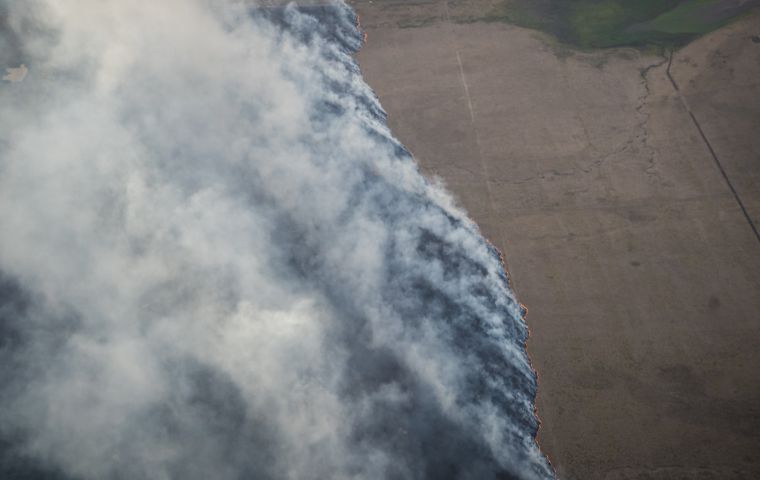MercoPress. South Atlantic News Agency
Drought strikes: Uruguay's economy shrinks by 2.5% in Year-on-Year analysis
 In terms of seasonally adjusted figures, economic activity saw a 1.4% contraction compared to the Q1 of 2023. Photo: Sebastián Astorga
In terms of seasonally adjusted figures, economic activity saw a 1.4% contraction compared to the Q1 of 2023. Photo: Sebastián Astorga The Central Bank of Uruguay has unveiled concerning economic data, revealing a 2.5% year-on-year decline in the country's Gross Domestic Product (GDP) for the second semester of 2023. The figures, released on Thursday, shed light on the adverse effects of the drought on Uruguay's economic landscape.
While the second quarter of the year saw a 2.5% growth compared to the same period in 2022, there was a marked contraction of 1.4% compared to the first quarter. This downturn was notably evident in key sectors, including a staggering 27.4% drop in agricultural activity, an 11.8% decrease in electric energy, gas, and water, and a 6.6% decline in construction.
The Central Bank of Uruguay highlighted in its executive summary, “From the production approach, the fall in the agricultural, fishing, mining, and energy activities stands out, where the impacts of the drought were seen, partially offset by the positive performance of transport and storage activities, information and communications, professional activities, and leasing.”
On the demand side, there was a conspicuous “external decrease that was not offset by the increase in domestic demand,” despite a rise in household final consumption expenditure.
The report from the Central Bank noted, “External demand presented a reduction in the physical volume of exports of 6.3%, while imports increased 7.5%, resulting in a contraction of external demand in terms of physical volume compared to the same quarter of the previous year.”
In terms of seasonally adjusted figures, economic activity saw a 1.4% contraction compared to the first quarter of 2023.
The consulting firm Exante commented on the situation via X (formerly know as Twitter), stating, ”Q2 (second quarter) GDP performance was worse than expected, but Q1 (first quarter) figures were also revised upward. On a year-over-year measurement, the decline reported by BCU is 2.5%. The drought and the end of the works associated with the UPM 2 project were key determinants of the drop. However, several services items performed poorly in the last quarter.”
El desempeño del PIB del Q2 fue peor a lo previsto, pero también se revisaron al alza las cifras del Q1. En la medición interanual, la caída que reporta el BCU es de 2,5% (no tan diferente al 2,3% que aguardábamos antes de conocerse el dato). pic.twitter.com/eU9NPdzyRW
— Exante (@Exante_UY) September 14, 2023




Top Comments
Disclaimer & comment rulesCommenting for this story is now closed.
If you have a Facebook account, become a fan and comment on our Facebook Page!